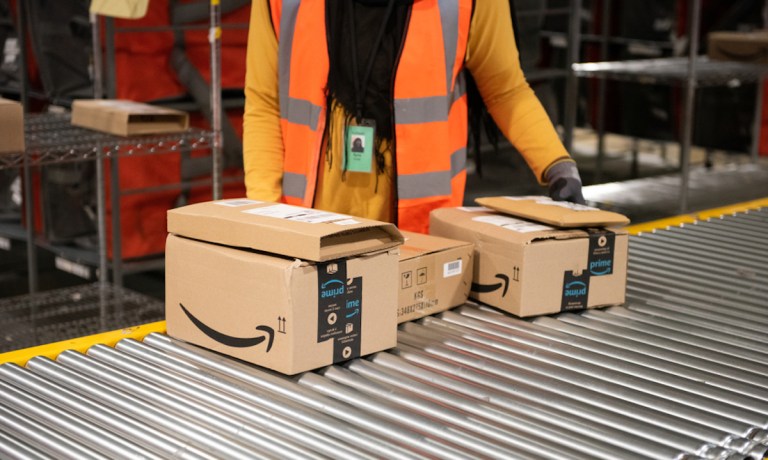
In the jockeying between retailers, not just during the all-important holiday season but well beyond the end of December, the battle of giants usually comes down to Amazon, Target and Walmart. And a strategic weapon, increasingly, can be found in logistics.
To that end, as PYMNTS reported on Monday (Nov. 29), CNBC reported that Dave Clark, the eCommerce firm’s CEO of worldwide consumer, said the company will become the largest delivery service in the United States – quite soon.
“We expect we will be one of the largest carriers in the world by the end of this year,” Clark told CNBC in a “Squawk Box” interview. “I think we’ll probably be the largest package delivery carrier in the U.S. by the time we get to the end of the year, if not in early ’22.”
That would mean Amazon’s volume and market share of last-mile deliveries would outpace FedEx, the U.S. Postal Service and UPS.
Building Out the Last Mile
The shift would come as Amazon takes greater “ownership” of the goods sold over its platform. As CNBC noted, the company delivered 66% of its own packages as recently as August of this year.
That increasing share of delivery comes as Amazon has, over several years, been expanding its physical plant (as the line item might be known on the corporate balance sheet) to include planes (the fleet is at a reported 85 aircraft as of this writing) and trucks.
In doing so, the company manages to blunt (at least somewhat) the unpredictable and rising freight costs that might come with relying on other carriers, and it also has better visibility into its supply chains.
As noted in this space headed into the holiday season, Amazon said that its infrastructure investments had well-positioned the company to deal with handle heightened consumer demand.
Read more: Amazon Unveils Strategy to Ensure Timely Holiday Delivery
During those preparations, the company said at the time that it had increased ports of entry across its network by 50%, expanded its container processing capacity twofold and broadened its ocean freight carrier network partnerships.
The continuous moves come in the wake of the 2019 launch of the company’s digital freight platform, commonly known as Amazon Freight, which reportedly has a pool spanning 50,000 trailers. At the same time, The Wall Street Journal noted that the company has opened 450 new facilities across the U.S. to house and ship items.
More details: Amazon Boosts Its Logistical Strength With Freight Service
None of this is to say that competitors such as Target and Walmart are standing idly by. Those companies have been broadening their own delivery channels, with services such as Shipt in place. Walmart is in partnership with FedEx, but has its own fleet of thousands of tractors and trailers.
And, as PYMNTS noted in this space over the summer, Walmart unveiled GoLocal, a white-label, delivery-as-a-service model that will serve customers and other merchants.
Also see: Walmart Launches GoLocal Last-Mile Delivery for Other Retailers
The battle will continue, but in an age where delivery windows are tightening – to within a matter of hours and not days – the retail battle will be waged inch by inch, package by package, last mile by last mile.